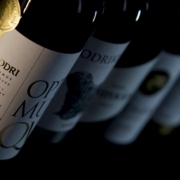Venture Capital revolution in Hungary
In recent years, the start-up market and venture capital investment in Hungary have seen a spectacular upsurge. Last year, more than €180 million of investment flowed into Hungarian startups, up 60 percent on the previous year. In addition to large foreign investors, Hungarians are also showing interest in innovative start-ups, and new advisors are being set up to help start-ups bring new ideas to market.
There is a lot of activity in the startup market in Hungary, and not only are startups seeking funding more actively, but more and more investors from abroad and at home are interested in innovative startups. This is good news because, as one emerging venture capitalist puts it, domestic and regional startups are lagging significantly behind their Western European and US counterparts, one reason for this from the investor side being the predominance of public money and the lack of adequate knowledge transfer.
Last year, however, Hungarian start-ups received €180 million in investment. A significant part of this is the USD 94 million in foreign capital raised by SEON, a specialist in online card fraud prevention, whose clients include major companies such as KLM, AirFrance, AVIS and OTP Bank. The Swedish investor also has Spotify and Bolt in its portfolio.
There are plenty of other examples of Hungary’s ideas and entrepreneurial spirit. AImotive, a pioneer in self-driving car technology, has dreamed big and leapt big, being one of the startups attracting the most venture capital in recent times, and last year it made its biggest ever Hungarian exit with the acquisition by Stellantis.
Barion, the most innovative Hungarian payments platform, has also successfully raised foreign capital in recent years, enabling it to enter the Czech and Slovak markets and is looking to acquire a Western European licence in 2023. This successful expansion confirms what one Hungarian angel investor stresses: start-ups in Central and Eastern Europe are performing well mainly in areas requiring high engineering skills and added value, such as software, machinery and, in some cases, biotechnology.
Experts say the region, and thus Hungarian startups, could attract more foreign investors, especially from German-speaking countries. However, much remains to be done in Hungary, as several factors, including costly due diligence, make it difficult to attract foreign capital. However, once these obstacles are removed, the international scene is essentially open.
Hungarian venture capitalists are also increasingly investing in early-stage Hungarian start-ups with global ambitions, which find it difficult to compete internationally without knowledge, experience and market intelligence. The Hungarian Venture Capital and Private Equity Association reports that in the second quarter of last year alone, its members invested approximately HUF 31 billion in 38 companies across 10 different sectors.
Meanwhile, Hiventures Zrt., owned by the Hungarian state, has grown in recent years to become one of the most significant venture capital investors in Eastern Europe. Several large and long-established venture capital funds have been joined by smaller investors. For example, STRT Holding has recently been set up, whose founders have so far incubated more than 140 start-ups in various formations. Based on their experience, they now want to create their own investment and knowledge transfer centre. Their aim is to launch the company on the Xtend market of the Budapest Stock Exchange as soon as possible, to facilitate institutional and private investment in startups, and to help more startups from Hungary and the region to become successful startups, strengthening local and regional economies.













